“Yeah… my family is Czech! I think they had something to do with Prague history I’m not really sure…”
This was my default answer when anyone asked why I chose Prague for my semester abroad. I knew I wanted to study somewhere in Europe so that I would be able to travel on weekends, and I knew I wanted to go to a city I had never been to before. My family’s history certainly helped me decide on Prague, but it was not the primary motivator— I really didn’t know anything about our history.
During our Prague orientation, I got a text from my mom: “ask if anyone knows anything about the Petschek family!” Trying to fight through the jetlag during our 3-hour global context class, I asked my teacher if she had heard my great-grandmother’s name and she laughed, “of course!” Vanda was shocked when I told her I was related to the Petscheks, which surprised me. So, naturally, I spent the rest of our lecture break Googling my great-grandmother. The ensuing deep dive into my history is ongoing, but here is a brief synopsis of what I’ve learned so far:
The Petscheks were industrialists and bankers, and headed the largest coal company in northern Bohemia. Julius, my great-great-grandfather, left his senior position in the state prosecutor’s office to join the family business in 1906. From that year one, there is a long list of economic accomplishments that, to be frank, I don’t totally understand (because I don’t really get economics), but I do know that they established a family-owned bank that is still standing today and I do know that the name “Petschek” is very well-known.
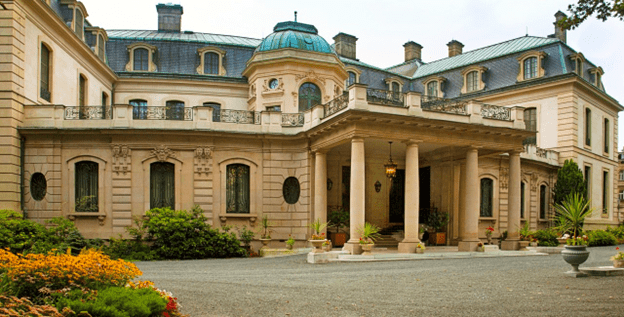
Otto Petschek, Julius’ nephew, built his villa before his death in 1934 and the family’s sale of their property and emigration to the United States following the Munich Agreement in 1938. Hans Petschek, Otto’s brother, then formed the United Continental Corporation in New York with his cousin, Julius’ son and my great-great-uncle. This company is still run by our relatives – which I know because I, like everyone in my family, got a “UCC account” when I turned 18, complete with periodic emails to stay up to date on family news.
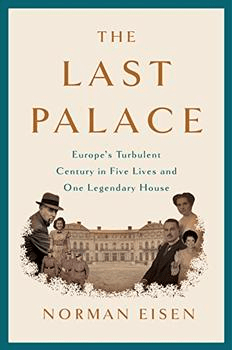
Now, when I found out that Otto’s aforementioned villa was the subject of a book called “The Last Palace” I was intrigued. The Petschek villa, once a family home, is now the active U.S. Ambassador’s residence. Not only that, it is regarded as one of the most beautiful residences owned by the U.S. government. The villa is currently only accessible to family members and invited guests, so naturally curious, my family wanted a tour when my brother and parents came to visit. After several emails back and forth between my mother and the house manager, we secured an appointment.
When we arrived at the front gate, we went through the checklist: passports, second form of ID, copy of family tree. The security guard opened this circular window in the wall next to the gate like the scene in the Wizard of Oz and our names on the family tree were Dorothy’s ruby slippers that got her in to see the Wizard. I thought it was a bit over the top until we walked through the gate and reached the house. The incredibly kind house manager, Tilly, walked us through each stunning room. The libraries, the bedrooms, even the bathrooms were beautiful. Throughout the tour, we heard little anecdotes about the houses history from Otto’s fixation on every design detail to Madeline Albright’s humility when she stayed at the residence. One of my favorites was the music lounge, the walls of which Otto apparently saw in another building in Paris, decided he had to have in his home, and had shipped in pieces via train to Prague where they were installed in the villa.
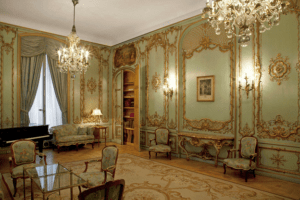
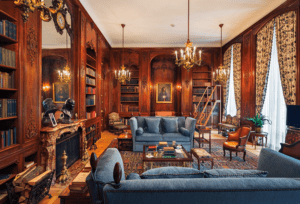
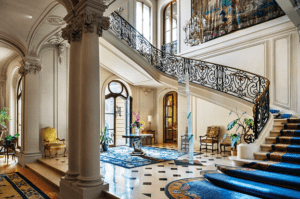
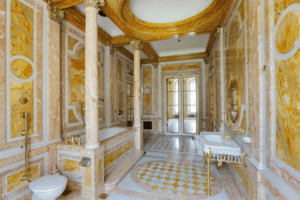
What struck me the most (other than the underground pool used once or the roughly 20 shower heads in the master bathroom shower) were the small remnants of World War II, when the Nazis seized the villa and it served as the residence of the head of the German army occupying Prague, General Toussaint. Thankfully, other than a few artifacts being taken or destroyed, much of the villa remained unaffected. However, Tilly pointed out a few places where the house’s history could be seen, such as a swastika drawn on the underside of a table and a Nazi stamp on another. When the Germans were driven out of Czechoslovakia in 1945, the villa was returned to the Czech Government and was subsequently bought by the United States in 1948.
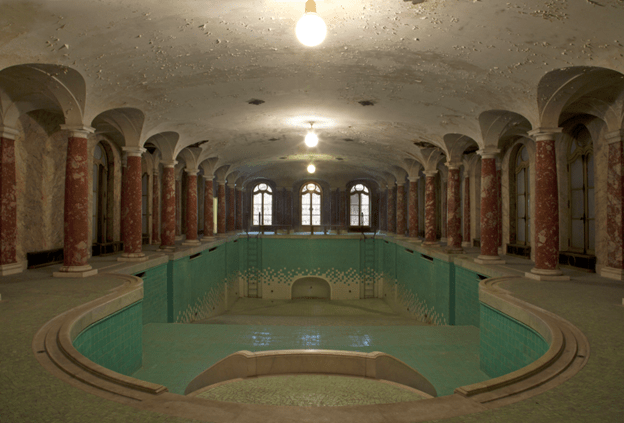
While the Czech Republic was under Communist control, the ambassador’s residence was a symbol of hope and freedom to Prague citizens. When Christianity was outlawed, the residence held Christian services for Czech citizens who would’ve been unable to practice otherwise. Additionally, the villa was an important meeting point for dissidents at U.S. events and meetings. In fact, the future president of the Czech Republic, Václav Havel, was arrested outside of the villa one evening as he left a meeting.
I felt so fortunate to have an opportunity to see the residence and learn about its history, an experience made all the more special by my familial connection to it. While my grandmother was born in Prague, she does not often discuss the Petschek family history, a habit inherited from her mother and not unlike many Jewish families who fled Europe during the war. I am still learning about my family, but walking through Prague on my way to classes feels a bit more special knowing about my family’s connection.
By Claire Montgomgery


Ginny Keniry
I’m so happy you had the opportunity to learn about your family and to see this beautiful villa/palace. I’m reading The Last Palace now and find it fascinating. Thanks for sharing your experience and the beautiful pictures!
Martha Katz
wonderful comments
Martha Katz I am reading the PALACE book and also love every minute Though I wish it had some of the excellent photos from this article
Juliana Keaton (daughter of Harry Keaton formerly Kuhns)
My father’s closest boyhood friend was Herbert Petschek. The Petschek family helped my father and his parents find passage to Shanghai on one of the last ships before the Nazi occupation. My dad stayed close with Herb as well as Herb’s brother Agon until my father’s death in 1983. Herb and his wife, Fran, even visited my own family when the two were in town from Argentina about 10 years ago. My sister and her husband will be in Prague next month and were hoping to visit my dad’s childhood home. They likely will also visit the Petschek villa.